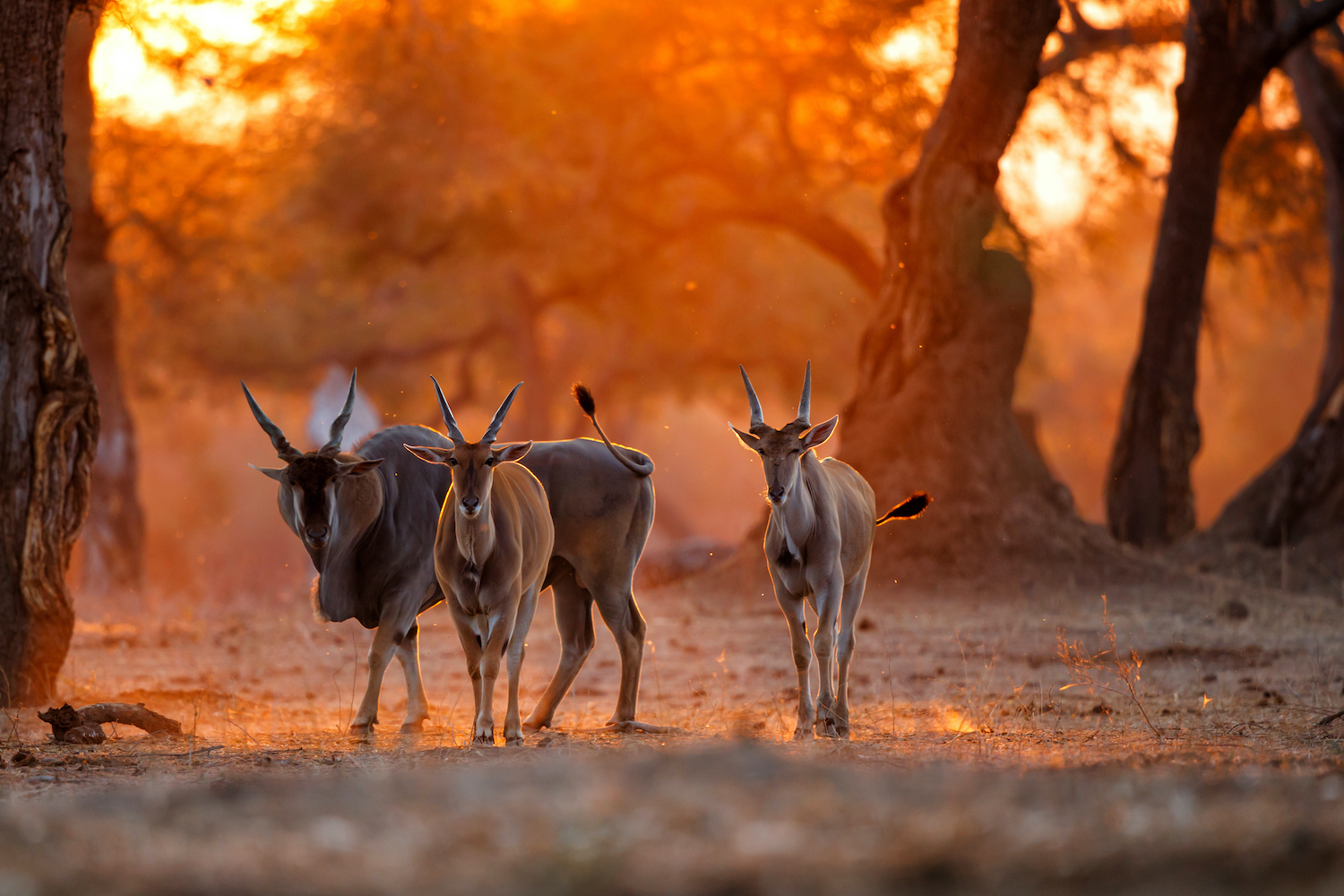Ultimate Southern Africa: A Photo Pro Expedition is an 18-day exploration of Southern Africa’s largest and most famous national parks and reserves. This region encompasses some of the world’s most diverse and abundant wildlife populations. Southern Africa has many of the best locations on Earth for a photography safari. Ancient deserts, salt pans, lush marshes, lagoons and wetlands are scattered across the region, providing a rich diversity of experiences.
Isolated camps on private sanctuaries allow travelers to interact with and photograph the species-rich habitats of Namibia, Botswana and Zimbabwe. Take flight on three separate helicopter safaris and a hot air balloon safari to capture aerial shots of Southern Africa’s most pristine wilderness enclaves.

© Brad Josephs
Explore Namibia’s Ancient Landscapes
This photography safari begins in Windhoek, the capital of Namibia, where the group will travel south to the 90,000-acre Kulala Wilderness Reserve. The camp is nestled in the world’s oldest desert, a vast arid sand sea, known for generations as Sossusvlei. This photogenic landscape is Namibia’s largest conservation area, famous for these massive, red-colored dunes. The vast arid landscape has a ‘silent magic’ that continues to inspire locals and visitors. The dunes are beautifully littered with diamonds that have developed over thousands of years. Species like the spotted and brown hyena, aardwolf and bat-eared fox are also found scattered across the desert.
These sand dunes are the tallest dunes on Earth, towering a thousand feet above the desert floor. Private vehicles provide each traveler with the space and freedom to explore and photograph the landscape. Capturing how the sun transforms the desert from sunrise to sunset is every photographer’s dream. As the sun rises it illuminates the reddish-brown tint of the dunes and slowly deepens into a dusty rose color as the day unfolds. One morning you’ll get the chance to photograph the stunning aerial shots of the dunes from a hot air balloon.

© Brad Josephs
The adventure continues north to Etosha National Park, one of the largest parks in Africa, where the group will stay at Ongava Private Reserve. Etosha’s most famous attraction is the huge, pristine oval-shaped salt pan, known as the Etosha Pan. A salt pan forms when water in a lake or a pond evaporates over time leaving behind salt and minerals. The salt pan we see today at Etosha National Park is the remnant of an ancient lake that existed some 2 million years ago. It expands so wide, we can see it from space.
The salt pan itself can’t support much wildlife other than ostriches; however, alongside the edges of the pan, waterholes help support a grassy landscape and a multitude of wildlife. The perennial springs attract elephants, black and white rhinos, lions, leopards, cheetahs, giraffes, zebras and more.
Ongava Private Reserve is a 68,000-acre private game reserve, known to many as Namibia’s premier wildlife reserve. The reserve provides upscale accommodations to view the park’s vast salt pan that stretch across the horizon. With expertly trained naturalists and nature photographers, you’ll get intimate access to elephants, rhinos and cheetahs through guided nature walks and night drives. Travelers and photographers will have close encounters with Ongava’s rhino population as well.
Botswana and Zimbabwe: Africa’s Best Wildlife Photography Experiences
Leaving the arid landscapes of Namibia behind, the group flies to Maun, Botswana, the heart of the Okavango Delta. A UNESCO World Heritage Site, the region has nearly 5,800 square miles of wetlands, clear channels, lagoons and islands.
landscape is a watery mosaic that sustains an abundance of wildlife. The Okavango Delta is a unique wetland, created as water from the Okavango River travels from the Angolan highlands into the Kalahari Desert.
Travelers will stay at a private camp in the Chitabe Concession. The camp is fully encompassed by the Moremi Game Reserve, one of Botswana’s most famous reserves, known for its diverse and plentiful wildlife. From our secluded camp base, we have three full days for up-close wildlife viewing and incredible photography. Private rides and guided bush walks provide intimate chances to capture thrilling landscapes and animals. The Chitabe Concession is comprised of various distinct environments including waterways and marshlands, dry acacia and mopane woodland, riverine areas, open grasslands and seasonally flooded plains. The diverse landscape attracts elephants, buffalo, lions, leopards and cheetahs. All are readily abundant for wildlife viewing.

An exhilarating doors-off helicopter flight over the delta fulfills every photographer’s dream of capturing a once-in-a-lifetime aerial shot of this ecologically diverse landscape. Travelers get a second helicopter photography safari after traveling east to the Linyanti Reserve in Botswana. Linyanti is another one of the region’s best wildlife-viewing areas. With a bountiful environment of mopane woodlands, the region supports large predators and one of Africa’s biggest elephant populations.
After a few days of exploration, the group travels to Zimbabwe’s Hwange National Park to round out the 18-day expedition. Hwange is Zimbabwe’s largest national park, harboring herds of elephant and Cape buffalo that reach tens of thousands in size. The area’s many waterholes support this larger elephant population and a healthy population of predators such as lions, leopards, cheetahs, wild dogs and hyenas. Birds are also rich in this area with more than 400 species observed. Hwange spans 5,600 square miles and has a multitude of habitats ranging from woodlands and vast grasslands to salt pans and granite outcrops. The opportunities for close interactions with a vast array of wildlife are frequent and exciting. Other special sights include white rhinos that have recently been relocated to Hwange.
Travel with ease knowing that Nat Hab, its partners and Expedition Leaders value conservation-focused tourism. The diversity of wildlife and natural habitats across Southern Africa has been and will continue to hold a significant influence over this region’s culture, history and future. Sustainability and the prioritization of commerce, conservation, community and culture ensure that these perspective-shifting experiences benefit people and wildlife.

























